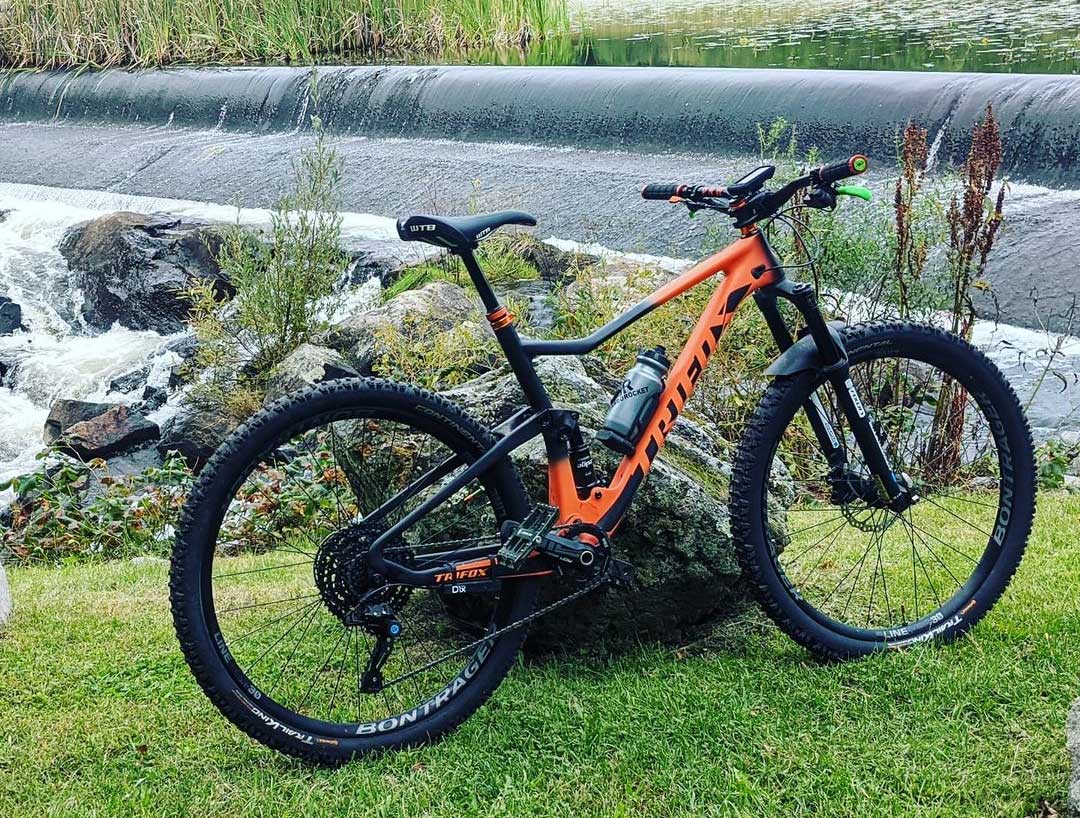
One of the most important factors when it comes to purchasing a mountain bike is choosing the right size. An improperly sized mountain bike can greatly affect your riding experience, from causing discomfort and pain to reducing your control and performance on the trails.In this article, we will take a comprehensive look at the MTB frame size chart and provide recommendations for finding the perfect size for you. We will also discuss important geometric terms and their meanings, as well as the problems that can arise from choosing the wrong size.MTB Frame Size Chart and Recommendations:Mountain bike frames come in a variety of sizes, typically measured in inches or centimeters. The size of the frame refers to the length of the seat tube, which is the part of the frame that holds the seat post and saddle.When it comes to selecting the right size frame, there are several factors to consider, including your height, inseam length, and riding style. Here are some general recommendations based on height:For riders under 5'4", a small frame (14-15 inches) is recommended.For riders between 5'4" and 5'8", a medium frame (15-17 inches) is recommended.For riders between 5'8" and 6'2", a large frame (17-19 inches) is recommended.For riders over 6'2", an extra-large frame (19-21 inches) is recommended.It's important to note that these recommendations should be used as a starting point, and riders should also consider other factors such as their riding style and personal preference.For most mtb frames, you can find the mtb frame size chart in the product details page, such as Carbon MTB Frame MFM100Important Geometric Terms and Their Meanings:When looking at the MTB frame size chart, there are several important geometric terms to be familiar with:Reach: The distance between the bottom bracket (where the pedals attach to the frame) and the center of the head tube (where the fork attaches to the frame). This measurement affects how stretched out or upright you will be on the bike.Stack: The distance between the center of the bottom bracket and the top of the head tube. This measurement affects the height of the handlebars in relation to the saddle.Standover Height: The distance between the ground and the top tube of the frame. This measurement affects how much clearance you have when standing over the bike.Problems Caused by Choosing the Wrong Size:Choosing the wrong size mountain bike frame can cause several problems, including discomfort, pain, and reduced control and performance on the trails. If the frame is too small, it can cause cramped and uncomfortable riding positions, while a frame that is too large can cause difficulty reaching the handlebars and pedals.A poorly fitting mountain bike can also cause pain and discomfort in the back, neck, shoulders, and wrists, as well as numbness or tingling in the hands and fingers. In addition, a wrong size frame can greatly affect your control and performance on the trails, leading to accidents and injuries.Conclusion:In conclusion, choosing the right size mountain bike frame is essential for a comfortable and enjoyable riding experience. By using the MTB frame size chart and considering important geometric terms, riders can find the perfect size for their height, inseam length, and riding style.Remember, it's important to not solely rely on the general recommendations and also to take into account your own physical anatomy and riding preferences. Don't overlook the importance of selecting the correct size as it can save you from a lot of pain, discomfort, and accidents in the long run.
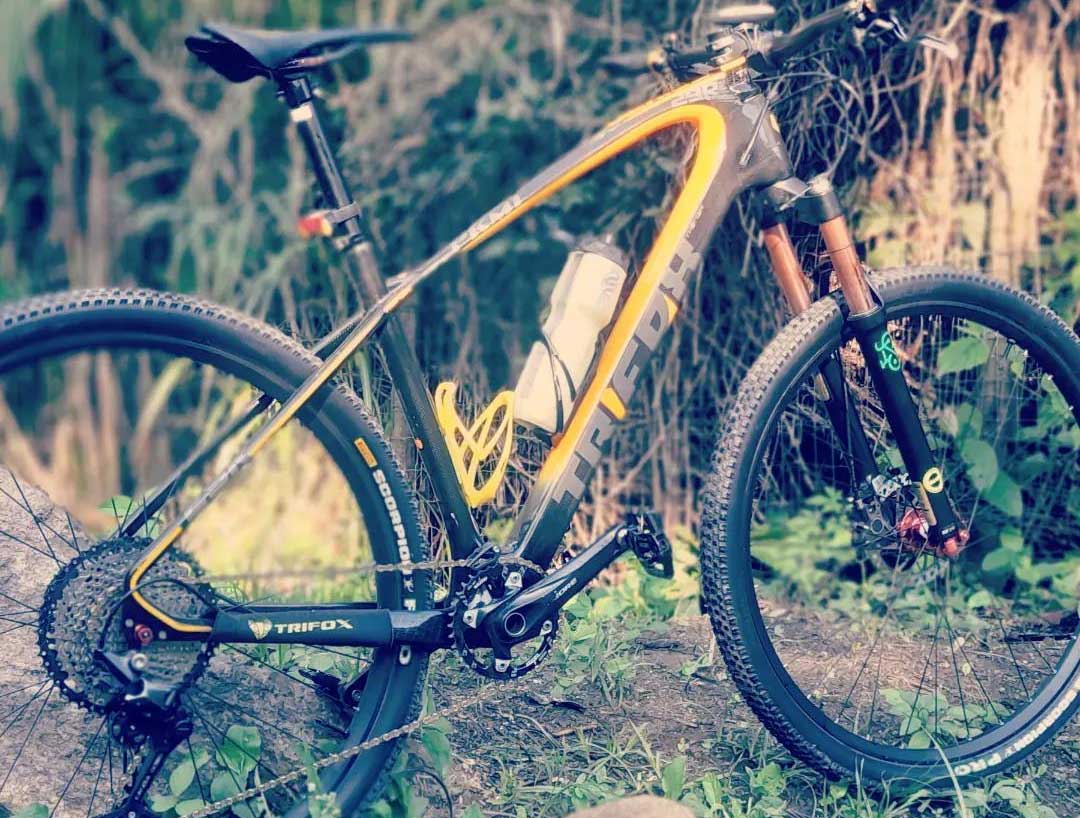
China has become a major player in the carbon bike frame market, with many reputable brands producing high-quality and affordable frames. In this article, we will introduce you to the top 5 famous carbon bike frame brands from China. Among these brands is Trifox Bike, which stands out for its exceptional quality and affordability.Trifox Bike MFM200 mountain bike frame for sale:The Trifox Bike Carbon MTB Frame MFM200 is a high-performance frame designed for mountain biking enthusiasts. It's made of T800 full carbon fiber, which provides excellent strength and stiffness while remaining lightweight.The frame features internal cable routing, tapered head tube, and BB68 - BSA bottom bracket compatible, providing a clean and sleek look. The geometry is optimized for trail riding, with a slack head angle and long top tube for stability and control.Trifox Bike is committed to providing high-quality and affordable carbon frames for mountain bikes, and the MFM200 is no exception. It's an excellent choice for anyone looking for a reliable and durable frame for their mountain bike.Top 5 Famous Carbon Bike Frame Brands from China:Trifox Bike:Trifox Bike is a well-known brand in the carbon bike frame market, offering high-quality and affordable frames for mountain bikes and road bikes. Their frames are made of T800 carbon fiber, providing excellent strength and stiffness while remaining lightweight. Trifox Bike is committed to providing exceptional quality and affordability to mountain biking enthusiasts.Hongfu Bikes:Hongfu Bikes is a popular brand that offers a wide range of carbon bike frames for road and mountain bikes.ICAN Cycling:ICAN Cycling is a well-established brand in the carbon bike frame market, offering high-quality frames for road and mountain bikes.Yoeleo:Yoeleo is a reputable brand that offers a range of carbon bike frames for road and mountain bikes.Dengfu Sports Equipment:Dengfu Sports Equipment is a leading brand in the carbon bike frame market, offering a wide range of frames for road and mountain bikes. Conclusion:In conclusion, China has become a major player in the carbon bike frame market, with many reputable brands producing high-quality and affordable frames. Among these brands is Trifox Bike, which stands out for its exceptional quality and affordability. We highly recommend the Trifox Bike Carbon MTB Frame MFM200 for anyone looking for a reliable and durable frame for their mountain bike.
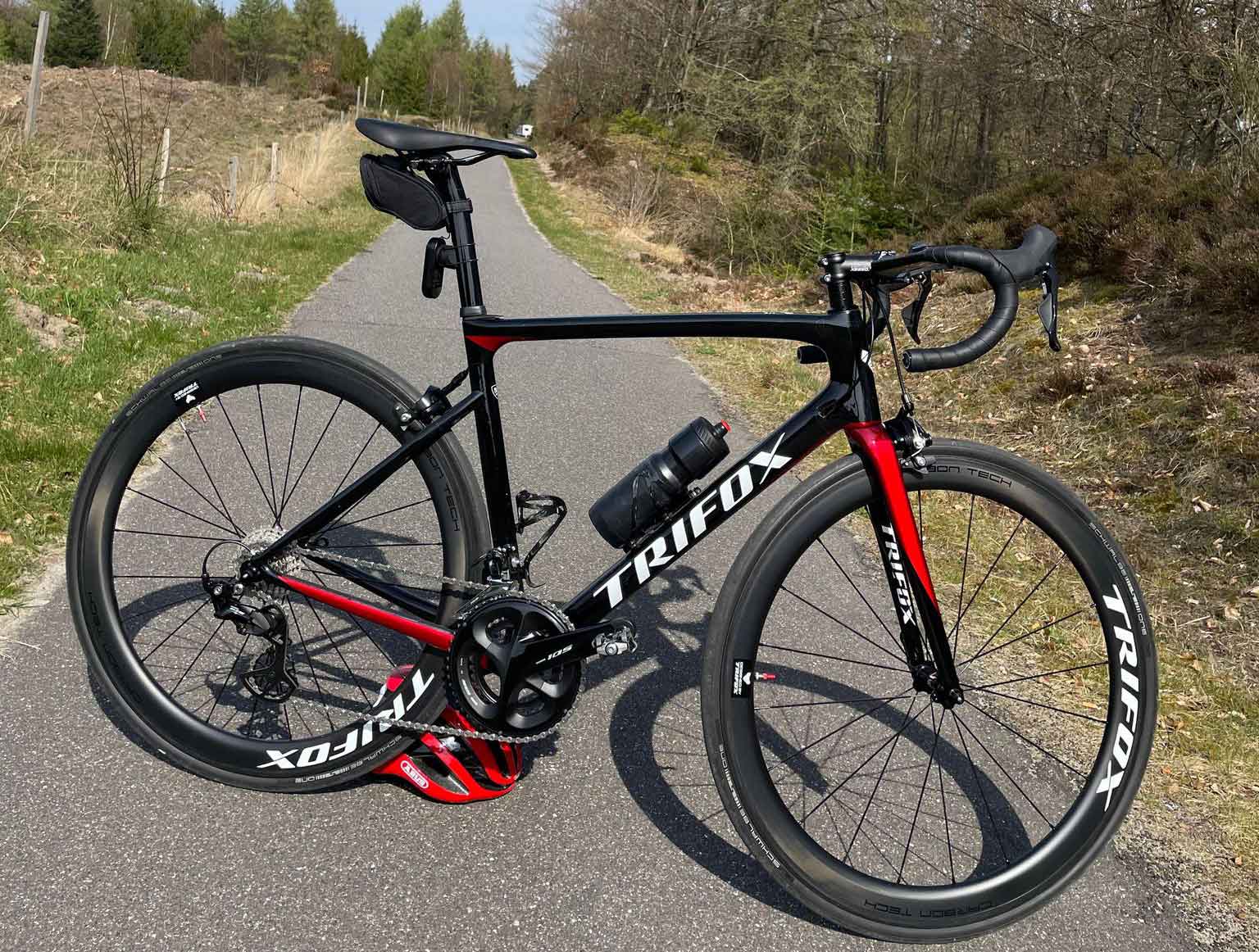
Finding the perfect road bike can be a daunting task and choosing the right frame size is crucial for a comfortable and efficient ride. One of the most important factors in selecting the right frame size is your height. With the right frame size, you can avoid injury, reduce fatigue, and improve your performance on the road. 1. Measure Your Height: To determine the right road bike frame size by height for you, the first thing is to measure your height accurately. Stand against a wall without shoes, and place a measuring tape on the top of your head. Measure down to the floor. This measurement will give you an idea of the appropriate frame size that will suit your height. 2. Use a Frame Size Chart: Frame size charts are readily available on most bike manufacturers' websites, and they offer an easy way to find the appropriate frame size for your height. The charts usually take into consideration various factors like your inseam, arm length, and torso length. Simply match your height measurement with the corresponding frame size on the chart to choose the right road bike frame size. 3. Consider Your Riding Style: Another important factor to consider when choosing the right road bike frame size is your riding style. If you're a casual rider who enjoys leisurely rides around the park, a bike with a smaller frame size may work for you. However, if you're a serious cyclist who participates in races or long-distance rides, you may want to consider a larger frame size that provides a more aerodynamic position and greater power transfer. 4. Test Ride Different Sizes: While frame size charts and measurements can give you an idea of the right road bike frame size, the best way to ensure a perfect fit is by testing the bike itself. Schedule a test ride with a knowledgeable bike shop or manufacturer to try out different sizes and styles of road bikes. This will help you to determine the best-fitting road bike for your height and riding style. 5. Seek Professional Advice: If you're still unsure about the right road bike frame size for your height after using size charts or test riding bikes, consider seeking professional advice. A professional bike fit specialist will help you determine the perfect fit by considering different factors like your body type, flexibility, riding goals, and cycling experience. They can also make specific adjustments to your bike frame to ensure a perfect fit. Conclusion: Choosing the right road bike frame size for your height is essential to ensure maximum comfort, efficiency, and performance on the road. Follow the steps above to measure your height, use frame size charts, consider your riding style, test ride different sizes, and seek professional advice if necessary. With these steps, you can rest assured that you will find the perfect road bike frame size that fits your height and needs. Happy cycling!
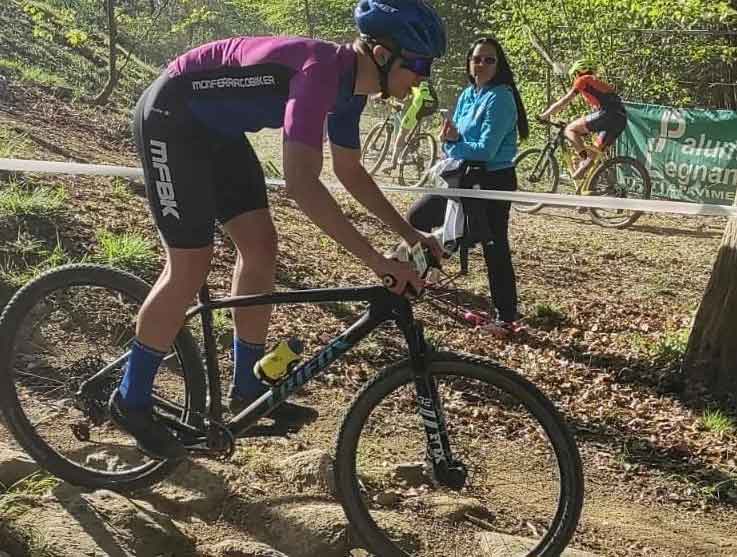
Riding a road bike is an exhilarating experience that every bike enthusiast should try. With its sleek frame, drop handlebars, and lightweight build, it's perfect for cycling enthusiasts who love to challenge themselves and go on long rides. However, before you start building your dream bike, it's essential to understand road bike frameset clearance. Frameset clearance is the gap between the frame of the bike and the wheels. It’s a crucial factor that affects your ride because it determines the size of the wheels you can use, the clearance of the frame with your body, and the comfort level you experience while cycling. In this blog post, we’ll explore the different types of road bike frameset clearances, how to measure them and determine the right clearance size for your body, and what you should know to have a more comfortable ride. 1. Types of Road Bike Frameset Clearances There are three main types of road bike frameset clearances: clearance for caliper brakes, clearance for disc brakes, and clearance for cantilever brakes. Caliper brakes are the most common and work by pressing against the rim of the wheel. Frames with caliper brake clearance usually have less space between the wheel and the frame, making them ideal for racers who want a more aerodynamic bike. Disc brake frames have more clearance than their caliper brake counterparts because the brake mechanism sits near the hub of the wheel. They provide more stopping power, which is why their clearance is more significant. Cantilever brake clearance is less common than the other two types. However, it is still available on some older models. This clearance is unique because it provides more clearance to make room for the brake mechanism's position. 2. How to Measure Your Frameset Clearance The first step in measuring your frameset clearance is to determine the tire size you want to use. After that, you will need to measure the height of your wheel and subtract that from the height of your frame. The resulting number is your frameset clearance. It’s essential to measure the clearance on both sides of your wheels since they might not have the same level of clearance. In addition, make sure to measure in millimeters to get an accurate reading. 3. How to Determine the Right Frameset Clearance Determining the right frameset clearance for your body depends on your riding style and height. For road bikes, the clearance should be around 4 to 6 millimeters. If you are using wider tires, it’s essential to have more clearance, at least 1 to 2 millimeters more per side. Furthermore, if you are tall and want a more upright position while riding, you might need more clearance to avoid hitting your feet on the front wheel while cycling. 4. Other Factors that Affect Frameset Clearance The type of riding you prefer also affects your frameset clearance. If you’re using your bike for commuting or touring, you’ll want more clearance because wider tires are more comfortable and provide better traction on different surfaces. Finally, your riding style also plays a role. If you’re an aggressive rider who likes to take tight corners at high speeds, you might need a bike with less clearance and smaller tires to ensure a better grip on the road. Conclusion: Frameset clearance plays a vital role in the quality of your ride. Understanding the different types of clearances and how to measure them is the first step in finding the perfect bike for your body. Consider your height, riding style, and the type of riding you prefer to determine the clearance size that’s right for you. This way, you can experience a comfortable, fast, and safe ride on your road bike.
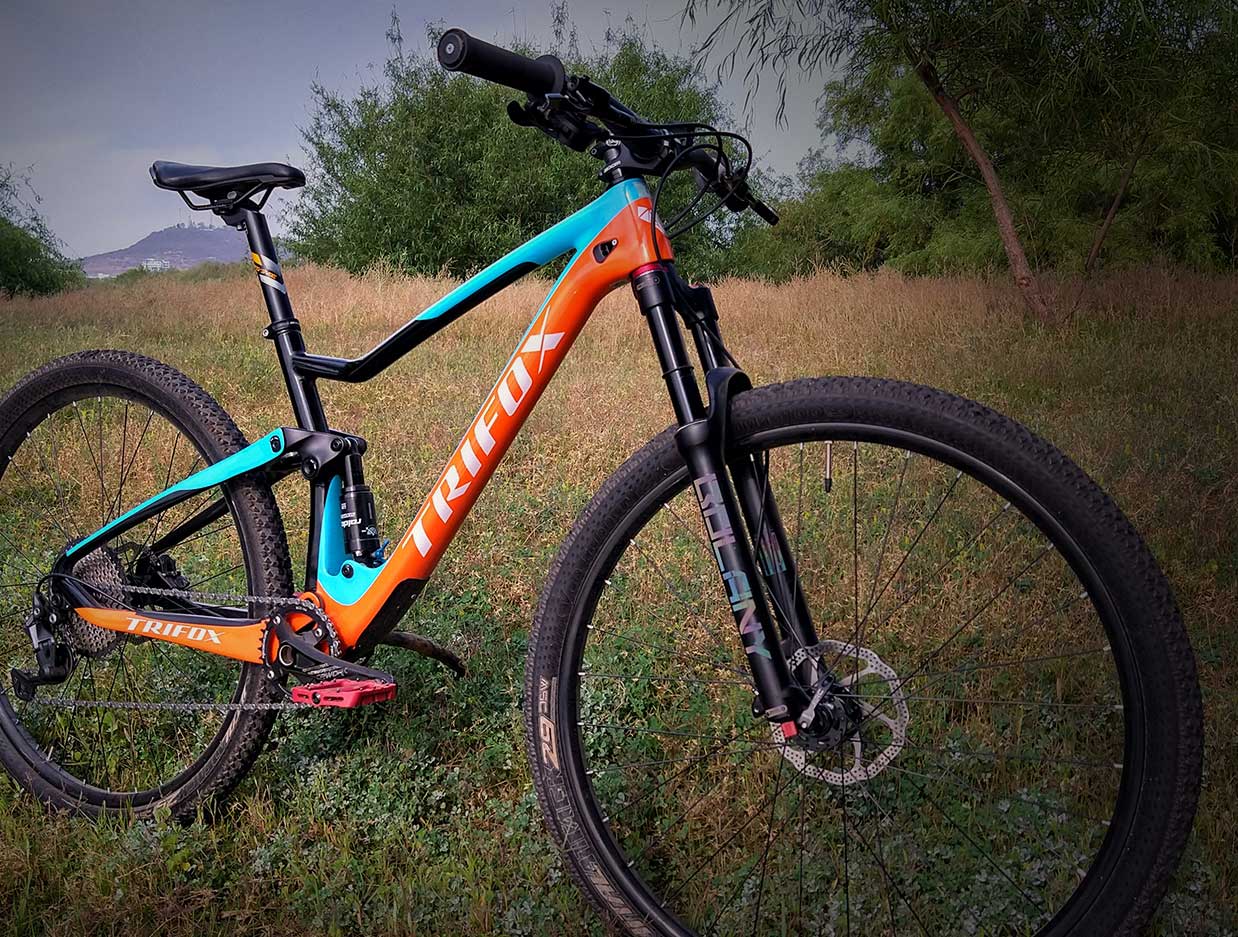
Are you looking for a high-performance mountain bike that can take on any terrain? If so, you need to consider a full suspension mountain bike. These bikes are designed to provide maximum comfort and control while navigating rugged trails and rough terrain.In this article, we will discuss what full suspension mountain bikes are, the benefits of owning one, and why you should choose one for your next mountain biking adventure. We will also introduce the Trifox Bike Pioneer Complete Bike as an excellent option for anyone looking to take their mountain biking experience to the next level.What is a Full Suspension Mountain Bike?A full suspension mountain bike is a type of bike that features both front and rear suspension systems. The front suspension system is located on the fork, while the rear suspension system is built into the frame. The suspension systems work together to absorb shocks and vibrations from the terrain, providing a smooth and comfortable ride.Benefits of Owning a Full Suspension Mountain Bike:Increased Comfort: With dual suspension systems, full suspension mountain bikes provide maximum comfort and control while riding on rough terrain. The suspension systems absorb shocks and vibrations, reducing fatigue and minimizing the impact on your body.Improved Traction: Full suspension mountain bikes offer improved traction, providing better grip and stability on rocky and uneven surfaces. This allows you to navigate challenging trails with greater ease and confidence.Enhanced Control: The suspension systems on a full suspension mountain bike provide enhanced control and handling, allowing you to maneuver through tight corners and technical terrain with ease.Versatility: Full suspension mountain bikes are versatile, allowing you to ride on a wide range of terrains, from smooth trails to more rugged and challenging routes.Reduced Risk of Injury: With the suspension systems absorbing shocks and vibrations, full suspension mountain bikes reduce the risk of injury from impact and fatigue.Why Choose the Trifox Bike Pioneer Complete Bike?The Trifox Bike Pioneer Complete Bike is an excellent option for anyone looking to take their mountain biking experience to the next level. It features a Carbon MTB Frame MFM100, Shimano M6100 12-speed drivetrain, and aluminum sus air-remote lockout air fork and 165MM shock, providing maximum comfort and control on any terrain.The bike also features a super light straight carbon seatpost, hydraulic disc brakes for reliable stopping power, and Trifox tires for improved traction and stability. It's an all-around high-performance mountain bike that's perfect for both beginners and experienced riders.Conclusion:In conclusion, full suspension mountain bikes are a great investment for anyone looking to take their mountain biking experience to the next level. They provide maximum comfort, control, and versatility, allowing you to ride on a wide range of terrains and reduce the risk of injury from impact and fatigue.If you're in the market for a high-performance full suspension mountain bike, we highly recommend the Trifox Bike Pioneer Full Suspension Mountain Bike. It's a well-built and versatile bike that's perfect for any adventure on the trails.
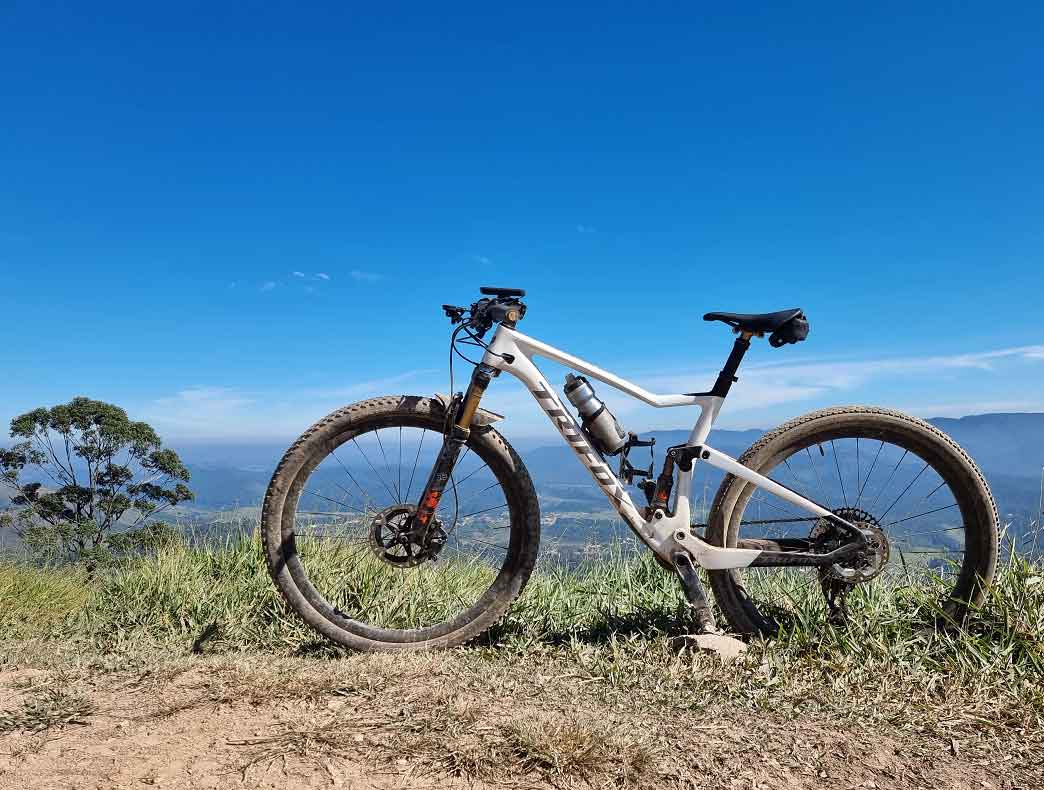
One of the essential components of any bike is its frame, as it determines the bike's stability, comfort, and performance. Bike frames come in all shapes, sizes, and materials, with each having a specific purpose and design. One of the common sizes of bike frames is 21 inches, which is ideal for taller riders. Now, we will discuss the various inch bike frames available and understand what size frame will suit your body type. 1. 21 inch bike frames A 21 inch bike frame is suitable for riders who are 6'4" to 6'7". It allows ample leg extension and comfort, preventing the rider from feeling cramped while pedaling. However, it's essential to select the right type of 21 inch bike frame, as various designs and materials have different characteristics. For instance, if you're using the bike for off-road or mountain biking, a full-suspension 21-inch frame may provide a smoother ride. 2. 19-inch bike frames A 19-inch bike frame is suitable for riders who have a height range between 5'10" and 6'2". It's a versatile frame size, suitable for both road and mountain biking. It's essential to select a 19-inch frame that suits your riding style, as a mountain bike frame design will differ from a road bike frame. A mountain bike frame may be more durable, whereas a road bike frame may prioritize speed and efficiency. 3. 17-inch bike frames A 17-inch bike frame is ideal for riders who have a height range between 5'4" and 5'8". It's a smaller frame size, primarily designed for road biking. A small frame size allows the rider to maintain a more aerodynamic posture and gain speed more easily. However, it's vital to test a 17-inch frame before purchasing, as it may feel cramped and uncomfortable for extended periods. 4. Other bike frame sizes Apart from the above-mentioned standard bike frames, there are several other sizes available, such as 15-inch, 13-inch, and 11-inch frames. These sizes are designed for children and people with shorter heights. It's essential to select the right size frame for children, as a bike that's too big or small may cause discomfort and instability. Conclusion: In conclusion, selecting the right size bike frame is essential to ensure a safe and comfortable ride. One of the common sizes for taller riders is 21-inch frames, whereas smaller frames such as 17-inch are designed for road biking and gaining speed. It's essential to select the right design and material for your frame, based on your riding style. A mountain bike frame will be different from a road bike frame in terms of durability, suspension, and stiffness. Before purchasing, it's vital to test the bike and frame to ensure it suits your height and riding style.
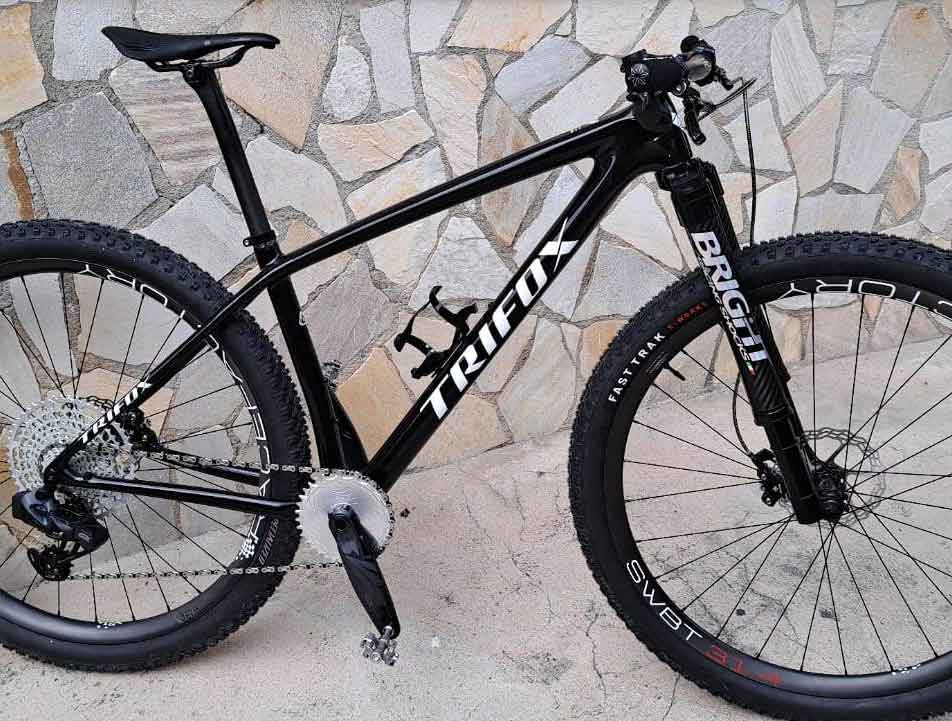
Carbon mountain bike frame are popular among riders who are looking for a bike that is lightweight, strong, and durable. Carbon fiber is a popular material for mountain bike frames because it is lightweight, stiff, and absorbs shock, which makes it ideal for off-road riding. Carbon fiber mountain bike frames come in different types, and in this blog post, we will discuss the different types of carbon fiber mountain bike frames that are available in the market. 1. Monocoque Frames The monocoque frame is a popular type of carbon fiber mountain bike frame that is commonly used in high-end bikes. It is made by molding carbon fiber into a one-piece structure that is strong and stiff. Monocoque frames are popular because they are lightweight and provide excellent shock absorption. The downside of this type of frame is that it is expensive to produce. 2. Hybrid Frame As the name suggests, a hybrid frame is a combination of two materials, carbon fiber, and aluminum. The aluminum is used for the rear end of the bike, while the carbon fiber is used for the front end. This combination provides a bike that is both strong and lightweight. The hybrid frame is ideal for riders who want the best of both worlds. 3. Laminated Frame The laminated frame is a type of carbon fiber mountain bike frame that is made by layering sheets of carbon fiber on top of each other and bonding them together with epoxy resin. This technique is cheaper than the monocoque technique, but it still provides a strong and stiff frame. The downside of this type of frame is that it is heavier than the monocoque frame. 4. Tube-to-Tube Frame The tube-to-tube frame is a type of carbon fiber mountain bike frame that is made by bonding individual tubes together to create the frame. This technique is cheaper than the monocoque technique, and it provides a bike that is strong and lightweight. The downside of this type of frame is that it is not as stiff as the monocoque or laminated frames. 5. Truss Frame The truss frame is a unique type of carbon fiber mountain bike frame that looks like a bridge. The triangular design provides a strong and rigid frame that is ideal for off-road riding. The truss frame is relatively expensive to produce, which makes it a rare type of frame. Conclusion: In conclusion, carbon fiber mountain bike frames come in different types, and riders should choose the one that best suits their riding needs and budget. Monocoque frames are ideal for riders who want the lightest and stiffest frame, while laminated and tube-to-tube frames are cheaper alternatives that still provide a strong and stiff frame. Hybrid frames are ideal for riders who want the best of both worlds, and the truss frame is a rare type of frame that provides a unique design that is strong and rigid. Whatever type of carbon mountain bike frame you choose, you are guaranteed a bike that is lightweight, strong, and durable, perfect for off-road adventures.
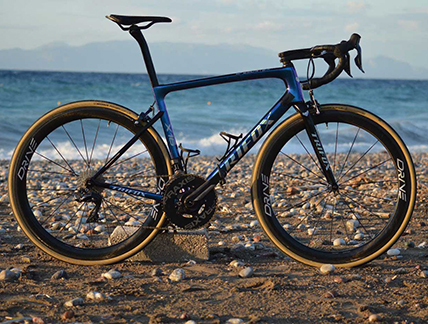
When it comes to choosing the right road bike frameset, there are two popular options to consider: steel and carbon fiber. Both materials have their unique strengths and weaknesses, and each one is suited for different types of riders and riding styles.In this article, we will discuss the differences between steel and carbon fiber road bike framesets, their pros and cons, and which one is best suited for you.Steel Road Bike Frameset:Steel has been the preferred material for road bike frames for decades due to its strength, durability, and ride quality. Steel frames are known for their comfortable and smooth ride thanks to their natural vibration damping properties. They are also ideal for touring and long-distance rides due to their ability to carry heavy loads.Pros:Comfortable and smooth rideDurable and long-lastingIdeal for touring and long-distance ridesAffordableCons:Heavy compared to carbon fiberNot as stiff, making them less responsiveProne to rust and corrosion if not maintained properlyCarbon Fiber Road Bike Frameset:Carbon fiber is a relatively new material used in road bike frames, but it has quickly gained popularity due to its light weight, stiffness, and aerodynamic properties. Carbon frames are designed to provide maximum power transfer and responsiveness, making them ideal for racing and high-performance rides.Pros:Lightweight and stiff, providing maximum power transferAerodynamic properties reduce wind resistance, increasing speedCustomizable layup for different ride characteristicsCan be molded into complex shapes for improved aestheticsCons:Expensive compared to steelNot as durable as steel and more prone to damage from impactsHarsh ride quality due to lack of vibration damping propertiesRequires special care and maintenance to avoid damage from UV exposure and stressWhich One to Choose?Choosing between steel and carbon fiber road bike frameset comes down to your riding style, preferences, and budget. If you prioritize comfort, durability, and affordability, steel is the way to go. It's ideal for touring, long-distance rides, and everyday use.On the other hand, if you prioritize speed, performance, and aesthetics, carbon fiber is the better choice. It's ideal for racing, high-performance rides, and those who want the lightest and most responsive bike possible. You can find a carbon road bike frameset for you on the Trifox website.Conclusion:In conclusion, choosing between road bike steel frameset and carbon road bike frameset comes down to your personal preferences, riding style, and budget. Both materials have their unique strengths and weaknesses, and each one is suited for different types of riders and riding styles.If you're still unsure which one to choose, we recommend trying out both materials to see which one feels the most comfortable and suitable for you. Remember, the right frameset can make all the difference in your cycling experience, so choose wisely.
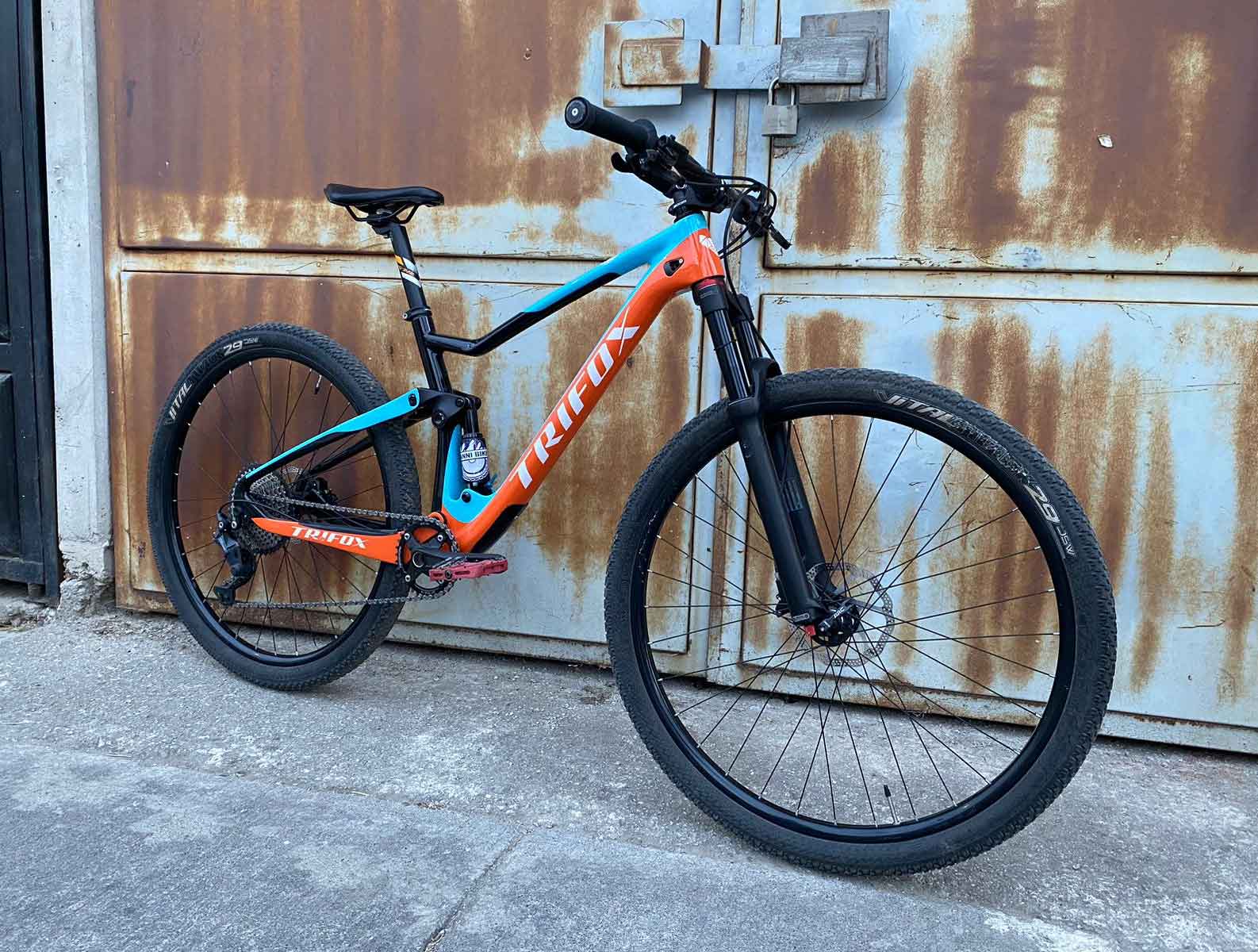
Are you planning to buy a new MTB frame but confused about which one to choose? If yes, then you have come to the right place. Two popular options available in the market are track frameset and trifox frame. Both these frames have their perks, but which one is better? Understanding the differences between these two frames is essential to make an informed decision. The first difference between the track frameset and trifox frame is the material used for construction. trifox frame is made of carbon. The carbon is lightweight, and it provides better agility and control. So, if you are looking for a lightweight and agile MTB, trifox frame is your best bet. Another difference between the two frames is their designs. Trifox frame has a boost design, which can accommodate a larger tire of up to 2.35 inches. It also has a frog leg design that increases the rear fork's elasticity, making it more shock-absorbent and comfortable to ride. The track frameset, on the other hand, has a traditional design that can handle any rough terrain with ease. So, if you are looking for a smooth and comfortable ride, trifox frame is your best pick. The frames'geometry is also different, which makes a significant impact on the MTB ride quality. The trifox frame has a modern geometry that is designed for speed and agility. It has a shorter chainstay that makes it easier to turn and maintain balance during high-speed corners. The track frameset, on the other hand, has a longer chainstay that provides more stability for steep descents. So, choose the frame that suits your riding style. Another difference worth noting is the price range of the two frames. Trifox frame is generally pricier than the track frameset due to its material and design. However, if you are an experienced MTB rider who is always chasing speed and agility, then trifox frame's cost is worth the investment. Conclusion: In conclusion, if you are an experienced rider who wants to ride faster and more agile, then trifox frame is the way to go.

















